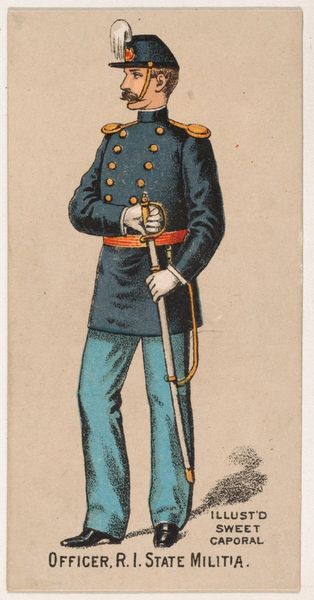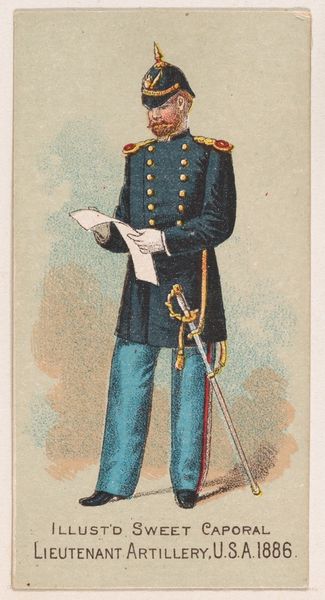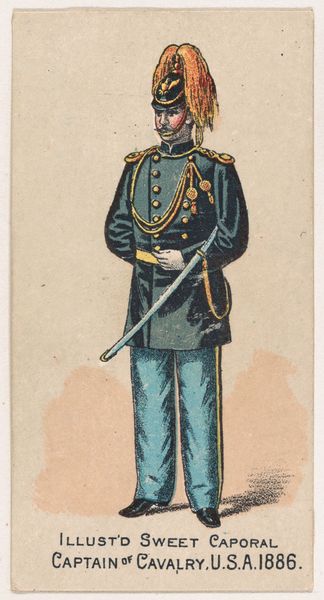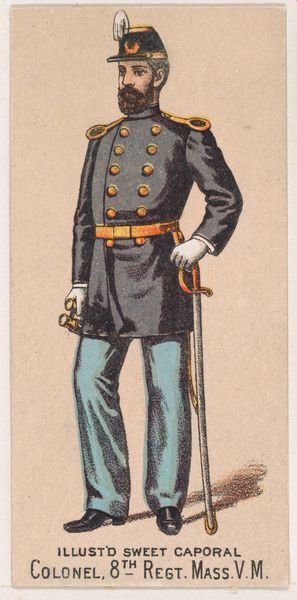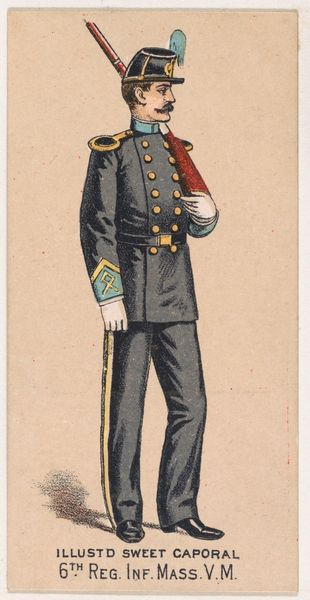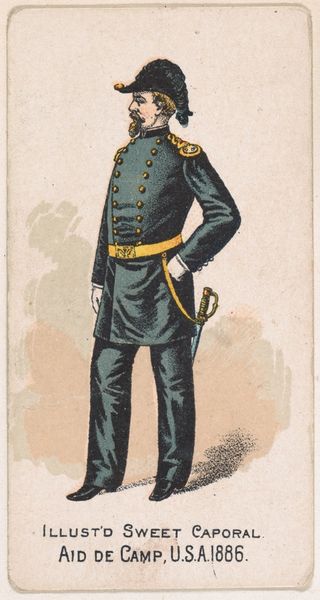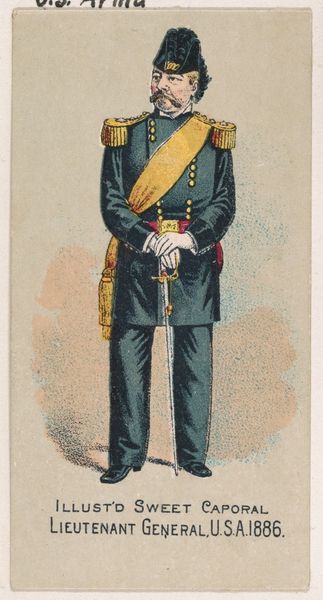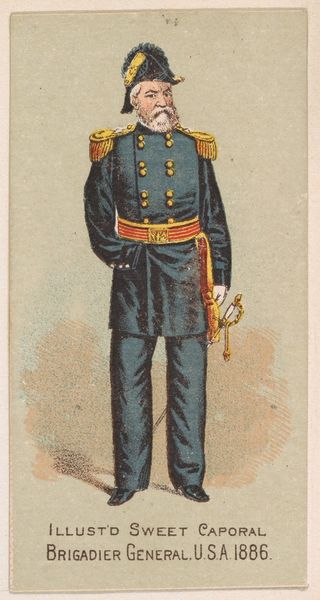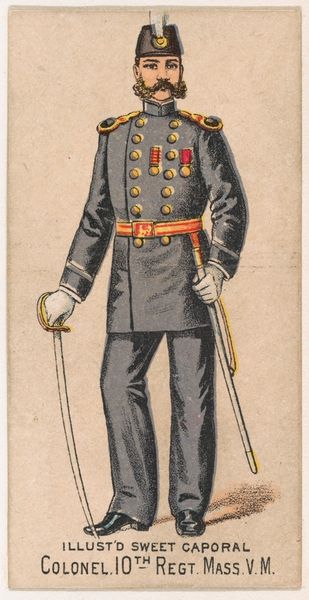
Officer, 1st Regiment, Iowa, National Guard, from the Military Series (N224) issued by Kinney Tobacco Company to promote Sweet Caporal Cigarettes 1888
0:00
0:00
drawing, print
#
portrait
#
drawing
# print
#
caricature
#
caricature
#
soldier
#
men
#
history-painting
#
profile
#
realism
Dimensions: Sheet: 2 3/4 × 1 1/2 in. (7 × 3.8 cm)
Copyright: Public Domain
Editor: Here we have, "Officer, 1st Regiment, Iowa, National Guard," from 1888, a print drawing originally made as a promotional item by Kinney Tobacco Company. What strikes me is how formal and posed he is. Curator, what's your take on this image and its place in history? Curator: Well, this image provides an interesting glimpse into the popular culture and the construction of military identity during that era. Produced by a tobacco company, its purpose was promotional. How does that context shift your understanding of it? Editor: I see your point. Knowing it's an advertisement, it feels almost satirical, like they're selling a romanticized ideal of military service, packaged with their cigarettes. It feels like pure marketing and spectacle rather than, say, serious art. Curator: Exactly. And consider the distribution. These cards were inserted into cigarette packs, making them accessible to a broad public. How do you think this mass distribution influenced public perception of the military, especially in a period of Reconstruction and evolving national identity? Editor: So, this card served not only as an advertisement but also as a subtle tool for shaping public opinion, normalizing the military and potentially masking the complexities of the post-Civil War period? Curator: Precisely. The visual representation and its dissemination speak volumes about the social and political forces at play. It's not just a portrait; it's a cultural artifact that participates in shaping a public role for military, even promoting military service through a product intended for general consumption. What has resonated most with you about it, thinking of that broader scope? Editor: It's surprising how such a small, seemingly insignificant card can reveal so much about the intertwining of commerce, politics, and identity in late 19th-century America. Curator: Indeed. These visual texts act as little time capsules, revealing grander societal structures and attitudes about duty, patriotism, and national image-making that can often be obscured when considering 'high art' alone.
Comments
No comments
Be the first to comment and join the conversation on the ultimate creative platform.
